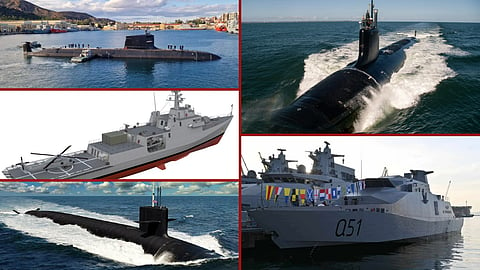

It's an all-navy roundup this week as we cover the delivery of a new US Navy submarine and the construction of five others, launches of a Spanish Navy submarine and a Qatari Emiri Navy attack craft, and the introduction of a new class of frigate.
US naval architecture firm Gibbs and Cox recently unveiled a new design of corvette that will also be marketed to export customers.
The corvettes in the class are being developed as scaled-down variants of a Gibbs and Cox frigate design, examples of which are under construction in Taiwan and will take on anti-air warfare and anti-submarine warfare missions.
Huntington Ingalls Industries' Newport News Shipbuilding (NNS) division has handed over the Virginia-class attack submarine USS Massachusetts to the US Navy.
The boat is the 25th Virginia-class submarine overall, as well as the 12th in the Virginia-class to be delivered by NNS.
Dearsan Shipyard of Turkey has launched a new fast attack craft (FACs) ordered by the Qatari Emiri Navy.
The future QENS Al Wakrah will be the first vessel in a new class of two FACs being built by Dearsan for the Qatari Emiri Navy.
The Pentagon has awarded General Dynamics Electric Boat (GDEB) a US$2.28 billion cost-only modification to a previously awarded contract for additional advance procurement and advance construction of five Columbia-class nuclear-powered ballistic missile submarines (SSBNs) and to support additional program execution in accordance with Defense Federal Acquisition Regulation Supplement 252.232-7998.
Work will be performed in Groton, Connecticut (70 per cent); Newport News, Virginia (15 per cent); and Quonset Point, Rhode Island (15 per cent), and is expected to be completed by December 2031.
Spanish shipbuilder Navantia recently launched the future Narciso Monturiol, the second S-80-class diesel-electric submarine built by the company for the Spanish Navy.
Like class lead boat Isaac Peral, the future Narciso Monturiol will have an LOA of 80.8 metres, a hull diameter of 7.3 metres, a submerged displacement of approximately 3,000 tonnes, and air-independent propulsion, which can supply the boat with electrical power at any depth so that it can remain underwater for longer periods.
